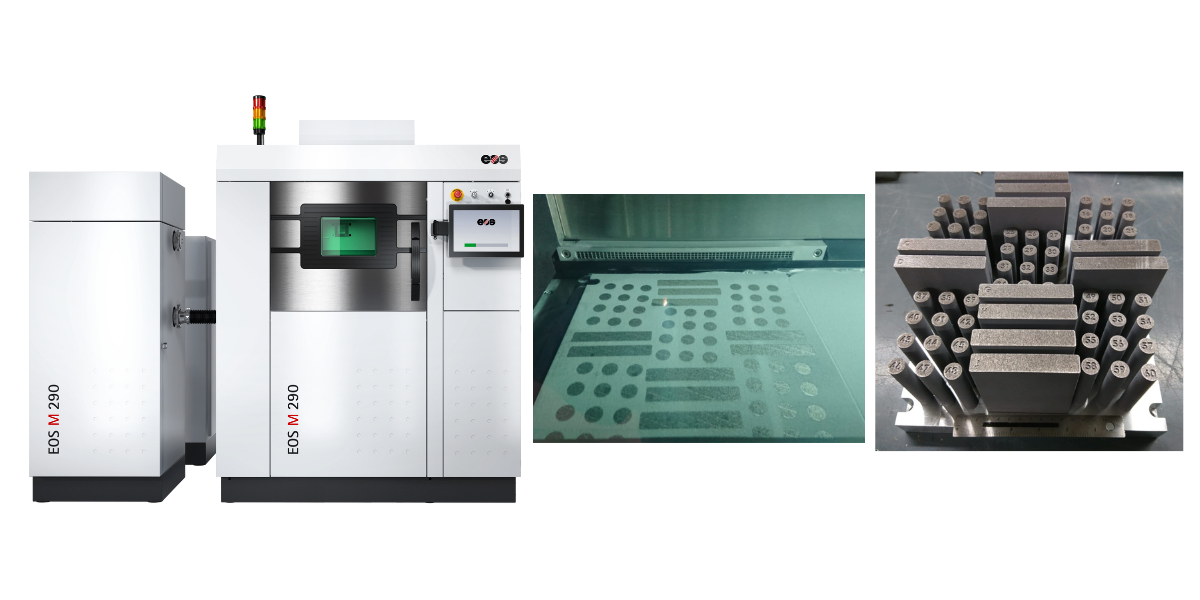


EOS M290 LPBF system printing samples with completed print.
Problem
Several sustainment critical parts have historically been produced using titanium alloys for their high-strength capabilities. However, titanium is expensive and difficult to machine. High-strength aluminum alloys such as F357 make it possible to pursue high-temperature applications such as heat exchangers at substantial cost savings. Laser powder bed fusion (LPBF) technology has shown promise in producing high-strength components in aluminum alloys, achieving comparable specific strength. Unfortunately, there is not a wealth of public data to help the adoption of F357 aluminum as an additive manufacturing (AM) material.
Objective
The objective of this program was to enable the use of aluminum alloys for high-temperature applications by understanding the effects of thermal treatments and service temperatures on the long-term performance of this alloy. Specifically, this effort sought to document the material state and microstructure of F357 aluminum for certification and qualification of components that are critical for the sustainment of legacy defense systems.
Technical Approach
The University of Texas at El Paso (UTEP) led the effort. The first phase involved material parameter verification including powder acquisition and characterization, material parameter validation, and the builds of sample analysis cubes for characterization. Up to five postprocessing techniques for heat treatment were investigated resulting in a down-selection for examining the thermal treatments and service temperature effects on F357 aluminum. Tensile samples were constructed in the EOS M290 and SLM M280 systems in the Z and XY orientations. Specimens were post-processed in the “as built,” T6, HIP, HIP +T6 states, with up to two additional heat treatments identified and developed. Subsequently, 100 and 1000 hours of exposure at an aging temperature of 350 degrees Fahrenheit were studied.
Accomplishments
A publicly available dataset on the prolonged effects of service temperatures ranging from 270 – 350 degrees Fahrenheit was created for F357 aluminum. Densities of >99.7 were achieved using various heat treatment exposure sets on both the EOS M290 and the SLM M280 LPBF systems. When tested, the mechanical response of as-built condition was found to differ very little between the two printing systems. Machine configurations, scanning strategies, different operators, and numerous other factors that left their thermal signature on the microstructure formation could be the cause. It was found that multiple different heat treatment recipes can be used to achieve high densities when density is used as the sole definition of quality. It was also found that all heat treatments used on this alloy substantially modified and homogenized the tensile response of the F357 specimens.
Project Participants
Project Principal

Other Project Participants
- NCDMM/America Makes
- Air Force Research Laboratory (AFRL)
- SLM Solutions
Public Participants
- U.S. Department of Defense
